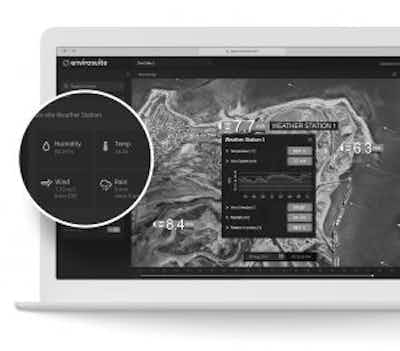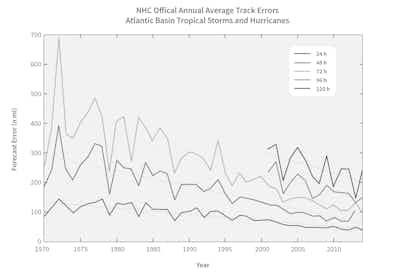Have you made plans for a nice day outdoors only to find it turns out to be wet or windy or too cold? Did you check a weather forecast beforehand? And it turned out to be wrong?
We all know that feeling of being caught out by the weather, but believe it or not, the fact is that weather forecasts are getting more and more accurate as the years go by.
A couple of generations ago, weather forecasts were made by trained meteorologists armed with charts drawn up from a fairly sparse sample of weather observations at ground stations. There was simply hope that great gaps in the charts could be guessed at reasonably. Predicting what would happen in the next few days was based mainly on an accumulation of knowledge from past experience and theory. And often they were wrong.
What about today’s technology?
Fast forward to now, and we have a continuous picture of Earth’s weather from satellites, aircraft, balloons, ships, weather stations, radar and other technologies. The data gaps have grown much much smaller. The vast arrays of data being gathered are crunched into supercomputer systems that drive complex weather models, giving today’s forecasters a huge advantage over their forebears.

Annual average official track errors for Atlantic basin tropical storms and hurricanes for the period 1970-2017, with least-squares trend lines superimposed. Image: NOAA
There are many models routinely predicting the weather, like those from NOAA in the US and ECMWF in Europe. They predict weather for the whole globe, while other models drill down to finer scales to provide detailed regional forecasts. Different models will tell a slightly different picture, so meteorologists need to apply their skills to fine-tune the forecasts that go out to the public.
You will notice that nearly all the time these days, the forecast for tomorrow is really good but by the time you’re looking out to 7 days, you need to take it with a grain of salt. As that 7-day outlook comes down to 3 or 4 days, we can become more confident about it, and finally at 24 hours we should step outside with confidence.
Even the best forecasts can’t predict individual clouds
Of course it isn’t always that straightforward: even the best forecasts can’t predict individual clouds and rain showers for tomorrow. Instead, we have to deal with a 40% chance of rain, for example. And that is where we can sometimes get unstuck: what does that mean, and will I actually get wet where I am at 3pm? This is the sort of question that forecasters continue to work on - how to best communicate a sometimes complex story in a simple way, so that a good 40% forecast won’t be seen as wrong when you do actually get wet at that time and place.
Weather forecasts are a great reflection of the state of science and technology: the need for more accurate forecasts has driven massive developments in computing, data handling and scientific research. While perfection is hard to define, let alone achieve, our daily forecasts have truly become impressively accurate.
Mastering the weather with site-specific forecasting
A single rain cloud can potentially shut down operational activities at an industrial site - despite what the local forecast might say. In an odd twist of fate sometimes an operation 3 kilometers down the road from one shut down from rain may be unaffected.
As I mentioned before events like this are also the hardest to predict.
Envirosuite’s forecasting model not only gives you site-specific real time weather data, but also historical weather trends so you can see how they impacted operations and better manage future impacts.
We continuously collect high-definition weather data, so whenever there’s a weather threat, you can go from data to action quicker than ever before.

Envirosuite's Impact Modelling solution allows your site to use weather to your advantage by scheduling operations at the right time.
